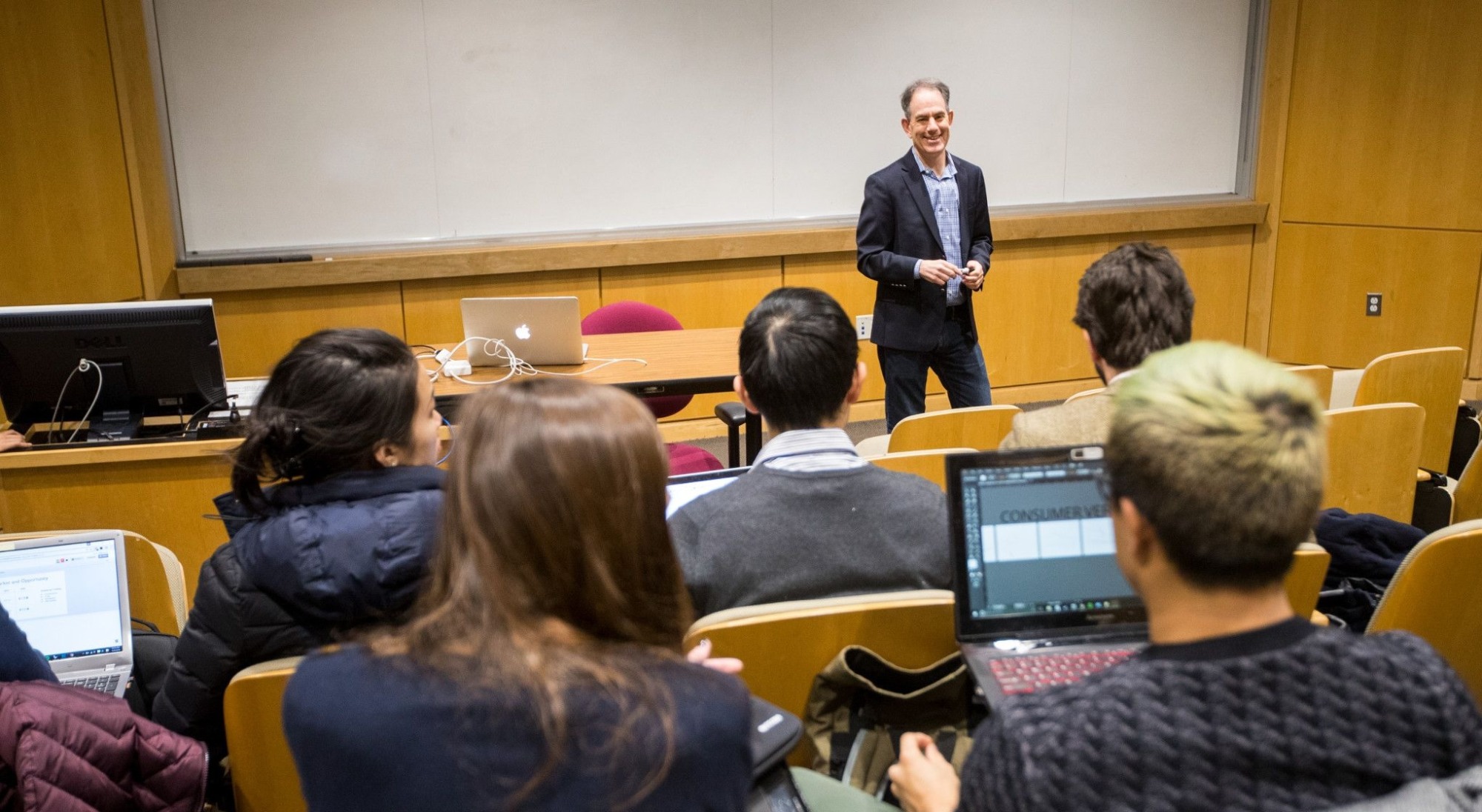
Danny Warshay loves three things: his family, Brown University and entrepreneurship. Interestingly, he’s managed to weave them all together throughout his unique career.
A 1987 Brown graduate with a degree in history, Warshay is a vocal proponent of liberal arts education — so much so that he’s managed to turn teaching new venture creation into a liberal art itself. As the Executive Director of the Nelson Center for Entrepreneurship and Professor of the Practice, he has spent nearly two decades launching ventures and teaching thousands of students a process he calls “See, Solve, Scale," even authoring a book of the same name.
But Warshay’s journey traces back to his final year as an undergraduate at Brown, when an independent study under the tutelage of Engineering Professor (Emeritus) Barrett Hazeltine led to an opportunity to join the leadership team of a local startup software company based in Rhode Island. Warshay played a pivotal role in the firm's growth, ultimately selling it to Apple Computer in the late 1980s. This early success propelled him into the world of startups, both within and beyond the tech industry following a brief stint in brand management at Procter & Gamble after earning his MBA from Harvard.
In 2005, his mentor Barrett Hazeltine extended an invitation to embark on a new entrepreneurial venture — this time, to join the faculty at Brown University and teach entrepreneurship.
Translating startup success to academic excellence
Not having taught before, Warshay quickly applied his startup skills to a new course. With no business school at Brown to guide him on teaching entrepreneurship, he soon found himself confronting many misconceptions about new venture thinking.
“Early on I was encouraged to focus on teaching ‘entrepreneurial spirit,’” he chuckles. “I wasn’t sure what that meant and, even if I did, I certainly didn’t know how to teach it.”
Warshay quickly surmised that what was needed was a structured process — like any engineering endeavor would have.
“As a faculty member in engineering I approached the task like any good engineer would if they were, say, building a bridge. We certainly would not tell people to go out and have the ‘bridge-building spirit.’” He continued, “We would distill common elements all bridge building has in common. We would teach the beginning, middle and end of a structured process while leaving lots of room for creativity and variation of all kinds.”
That thinking is what led to the development of the problem-solving process he coined, “See, Solve, Scale.” Now codified in a book, translated into other languages around the world, his process has been used in a wide variety of settings well beyond business startups such as large corporations, government agencies, nonprofits and even the military.
“‘See, Solve, Scale’ is a process that anyone can learn, master and apply to solving any consequential problems,” he notes.
Here are a few key takeaways that provide insight into this powerful methodology.